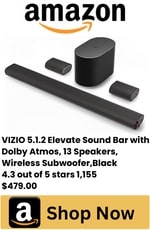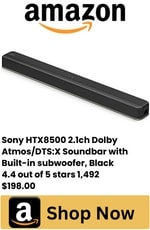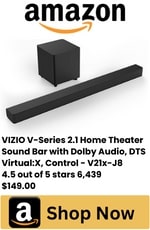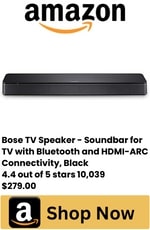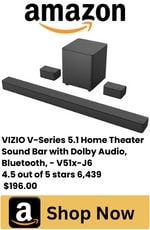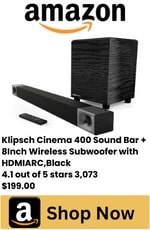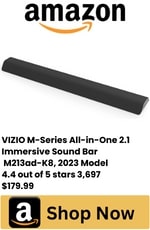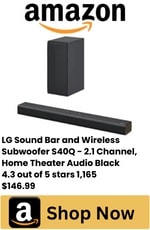How to Reduce Subwoofer Vibration Through Walls | Effective Ways
Home theater or music subwoofers can take you closer to the real action if you’re a big fan of partying or watching action movies. Subwoofer bass is one of the most important sources of noise pollution, according to research that has been conducted on this issue. If you live in an apartment, duplex, or condo unit, your neighbours might curse you for enjoying the low frequencies reproduced by your subwoofer.
As a result, one of the top concerns that most homeowners have is overcoming the problem of caving in vibrations caused by subwoofer systems through walls. As a result, in this post, we will focus on a few factors that can help you avoid friction with your neighbours.
These factors can help you to alleviate the problems associated with this type of activity. To understand how bass notes travel to adjacent rooms, we need first to understand what bass notes are.
Table of Contents
What is Low-Frequency Bass?
Understanding what bass is and how it is created is the first step to solving this problem of bass noise. Subwoofers produce bass, which is a low-frequency sound. Musicians use bass instruments such as the guitar, keyboard, keys, kick drums, and deeper voices to create bass sounds.
Low-frequency bass sounds are easier to hear and feel even by people who are deaf, compared to high-frequency sounds generated by midrange speakers. Because bass noises are deeply felt, it’s harder to eliminate them.
The problem isn’t your home theater’s volume but rather the vibration from your subwoofer if you live in an apartment, a duplex, or a condo. Acoustic noise originates from the sub, whose long wavelengths travel through walls, ceilings, and floors.
Here are a few simple tricks and hacks to reduce subwoofer vibrations reaching your neighbours through walls.
Tips to Help Reduce Subwoofer Vibration Through Walls
1) Placement close to the field
First, you can easily adjust the sub-volume by placing the subwoofer closest to you. Home theater systems perform best when the sound is low since the lower the sound, the less vibration your subwoofer produces. So, vibrations will generally be reduced by escaping through walls, ceilings, and floors to other rooms.
The placement of the subwoofer near you will allow you to tune the subwoofer’s volume and allow your eyes to capture a more pure version of the waveform because the subwoofer will be directly in front of you. A subwoofer placed in the corner of a room will sound different from a subwoofer placed in the middle of the room, where the reflection of the walls will distort the bass notes.
For a detailed comparison between the Polk Audio PSW108 Series vs Polk Audio PSW10. Explore the distinctions between these subwoofers to make an informed decision and enhance your audio setup.
2) The bass trap

Recent discussions about bass traps have made them a sure-fire option that we can’t ignore. Now, bass traps are acoustic foams attached to the corners of your living room so that every bit of sound can be captured and absorbed.
In addition, to capture any bass sounds that bounce off from these areas, bass traps are fitted at the corners of the room with an approximately six-inch thickness. However, one disadvantage of them is that the overall bass experience will be much lower.
Since they reduce the amount of bass going to other rooms, they help reduce the amount of bass escaping through different rooms. A neighbour living on the floor below you will still hear vibrations since they don’t deal with vibrations.
Adding more traps to the walls may absorb stray bass waves if placing sound traps on the corner doesn’t work.
3) Uncouple the subwoofer
Decoupling of the subwoofer is also an option. This method reduces or dampens mechanical vibrations transmitted through the floor caused by the subwoofer. The base of a subwoofer is now elevated by tiny feet on almost all models.
Despite their great success at preventing cabinet damage from moisture, they rarely dampen vibrations emitted by the subwoofer. You should always place an isolation pad on the subwoofer to drain the vibration to decouple it from the floor.
There are many different types and designs of isolation pads available today. The market is full of cheaper models and more high-quality brands that all use the same rubberized materials for the cabinet and good spacing between them so that the vibrations of the cabinet don’t reach the floor before the air gaps between materials dampen them.
Alternatively, you can purchase stock feet for your subwoofer with rubberized elastomer instead of the factory-installed feet with your subwoofer. In addition to dampening each cabinet’s vibration, these footings ensure that the low-frequency bass tones don’t overpower the speakers.
If you’re curious about how to tell if a subwoofer is blown or experiencing issues check out our comprehensive guide. Gain insights into identifying potential problems with your subwoofer and learn troubleshooting tips to maintain optimal audio performance in your home theater setup.
4) Set the bass level to the desired level
Tuning your home theater system continues after adjusting the bass level, which is one crucial step. Crossover settings, gain, and phase switches can affect sound quality.
The crossover, the gain, and the phase switch must be tuned for a better 3-dimensional music experience. Adjust the gain slowly until the sub fills the room if your subwoofer volume is turned off.
Until you notice the sound quality has improved, the phase switch can be turned between 0 and 180 degrees.
Common Mistakes to Avoid When Reducing Subwoofer Vibrations Through Walls
Here are some common mistakes people often make when trying to reduce subwoofer vibrations through walls:
Neglecting Room Acoustics: Focusing solely on the subwoofer’s hardware and placement while ignoring the overall room acoustics can lead to inefficient vibration control. Improving the room’s acoustic treatment with bass traps, diffusers, and absorbers can significantly enhance the effectiveness of vibration reduction.
Ignoring Isolation: Many overlook the importance of isolating the subwoofer from its surroundings. Placing the subwoofer on a rigid surface without any isolation pads or feet can allow vibrations to transmit easily through the floor and walls, defeating the purpose of vibration reduction efforts.
Improper Subwoofer Placement: While placing the subwoofer near your listening position is important, placing it in a corner or against a wall can lead to uneven bass response and excessive vibrations. Proper subwoofer placement, considering room dimensions and bass null points, is crucial for achieving balanced sound and reducing vibrations.
Inadequate Gain and Crossover Settings: Incorrectly setting the gain and crossover controls can result in distorted or boomy bass, leading to more pronounced vibrations. It’s essential to calibrate these settings according to your room’s acoustics and the capabilities of your subwoofer.
Ignoring Bass Management: Not integrating the subwoofer properly with the main speakers and configuring bass management in your AV receiver can lead to imbalanced sound distribution and vibrations. Properly setting up bass management ensures a seamless blend of frequencies and reduces the chances of excessive vibrations.
Using Poor-Quality Isolation Materials: Opting for cheap or low-quality isolation materials can undermine your efforts to reduce vibrations. Using well-designed isolation pads or feet specifically designed for audio equipment can significantly reduce vibration.
Neglecting Phase Alignment: Incorrectly adjusting the phase switch on the subwoofer can lead to cancellation or reinforcement of certain frequencies, affecting the overall sound quality and potentially increasing vibrations. Properly aligning the phase with your main speakers is essential.
Not Communicating with Neighbors: While implementing technical solutions can help reduce vibrations, simply talking to your neighbours about your audio setup and when you’ll be using it can go a long way. Mutual understanding and compromise can mitigate potential conflicts.
Using Down-Firing Subwoofers: Down-firing subwoofers can introduce more vibrations due to their design. However, this doesn’t mean all down-firing subwoofers are problematic. Some are designed with isolation mechanisms to minimize vibrations. Avoiding them altogether might lead to missing out on good options.
Relying Solely on One Method: People sometimes focus on one solution, like placing bass traps, without considering the holistic approach needed to reduce vibrations effectively. Combining multiple strategies, such as proper placement, isolation, and acoustic treatment, yields the best results.
Remember, addressing subwoofer vibrations requires careful planning, quality equipment, and a well-thought-out approach. By avoiding these common mistakes and adopting a comprehensive strategy, you can enjoy your home theater experience without causing disturbances to your neighbours.
Conclusion
As a final piece of advice, I’d like to give you one more trick that may greatly help. Make sure you don’t use down-firing subwoofers. This type of subwoofer gets more vibrations than other types because the subwoofer driver is facing downward.
Here are four tips for avoiding trouble with your neighbours and enjoying great music. Combining these methods can improve the bass quality when listening to music while playing games and watching your favourite movies so that your neighbours will not complain about you. At the same time, you enjoy the music, games, or movies.
FAQs
1. Why is vibration reduction important when using subwoofers in shared living spaces?
Excessive subwoofer vibrations can travel through walls, floors, and ceilings, causing noise disturbances to neighbours in shared living spaces such as apartments or condos. Proper vibration reduction techniques help maintain good relations with neighbours while enjoying your audio setup.
2. Can I solely rely on adjusting the subwoofer’s volume to reduce vibrations?
Adjusting the subwoofer’s volume can help, but it’s not the only factor. Proper placement, room acoustics, isolation, and calibration of settings like gain and crossover are crucial in effectively reducing vibrations while maintaining sound quality.
3. What role does room acoustics play in vibration reduction?
Room acoustics affect how sound and vibrations propagate. Bass traps, diffusers, and absorbers can improve sound quality and vibration control by minimizing reflections and capturing stray vibrations, ultimately reducing their transmission through walls.
4. Are down-firing subwoofers always a bad choice for reducing vibrations?
While down-firing subwoofers can introduce more vibrations due to their design, some models incorporate isolation mechanisms to minimize this issue. Researching and selecting a subwoofer with features that reduce vibrations, regardless of its design is important.
5. How do I approach my neighbours about my audio setup to prevent disturbances?
Open communication is key. Tell your neighbours about your audio setup and when you’ll use it, and encourage them to share any concerns. A mutual understanding can help you adjust your usage to avoid disrupting their peace.

Author: Baqarrasheed
I know all about home theater items! I have been doing this for more than three years now. I am good with things like sound systems, TVs, projectors, and all that cool entertainment gear. I like to help folks by testing and talking about these gadgets on Hometheaterjournal. I want to make sure everyone can create an awesome entertainment setup at home without any confusion.
I write the creative content for HometheaterJournal.



